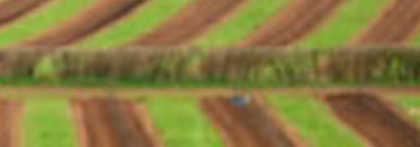Table of Contents
I saw this article in HortWeek: Thatchers Cider plants 13,000 apple trees in new Somerset orchard.
I made a mental wager to myself before reading it: I bet they exaggerate the environmental benefit side of the orchard.
Not because of anything about Thatchers Cider.
It’s because I think it’s nigh impossible to write a press release about rural industry without flexing, or stretching, the old environment creds.
Especially with our robot chums Chat GPT et al behind the pen.
Let’s begin the backseat demolition driving:
“The planting follows three years of regenerative farming to prepare the land for the new trees, ensuring top quality soil for the tastiest apples.”
Stop. Regenerative farming is by definition not intended to be a three-year process. It is a holistic, longer-than-life approach to agriculture.
It achieves short term business goals like any farming practice, while working towards long term landscape improvements that build fertile soil without depending on buying in chemical fertilisers.
This is almost always achieved by farming multiple crops and livestock in the same field, at least for portions of the year.
But even grant them those first three years, I can still equally well say “the planting ended a mere three years of regenerative farming”.
Because no specifics are given, I’m reading three years of “regenerative farming” as “growing a fallow meadow of cover crops, possibly with livestock grazing”.
Which is lovely, but slightly oversold.
“Our orchards are not only places of cider production, but havens for biodiversity; from the bees that pollinate the trees to the worms that enrich the soil.”
Martin Thatcher, Quoted in a Press Release for Hortweek
I’ve never spoken to Martin, and I’ve seen how press releases work, so I am not assuming that Martin, or any human, actually said that.
Let’s gut the absurd statement until there are only giblets left for our stew, seasoned with bay tree leaves from yesterday’s laurel crowns.
Havens for biodiversity claim, part 1
The best orchards for biodiversity are known as polycultures, mixed orchards that grow several fruit tree species, often with smaller shrubs and perennial crops in between them, ideally sprinkled with support trees that are grown entirely for their soil and wildlife value.
Stefan Sobkowiek is Canadian level handsome and charming, and happens to know a bit about polyculture orchards.
Thatchers are growing 13,000 apple trees, half Red Windsor, half Katy.
They are both typically eating apples to a home grower; neither variety is a dedicated cider apple such as Redstreak, Dabinett and Tremlett’s Bitter that are the hallmark of a delicious Thatchers Big Apple.
A field of only one species, albeit with a slight variation between its halves, is the opposite of a biodiverse realm: it is the definition of a monoculture, which is how most farms are for efficiency.
Havens for biodiversity claim, part 2
Most country fields have a potentially biodiverse hedge around them, and in the HortWeek article, you can see there’s a hedge running through the field too.
On the one hand, top marks for them not simply removing the hedge: credit where it’s due, bravo.
On the other hand, after 3 years of “regenerative” farming, look at the gappy state of it:

There is no 2-3 metre margin of meadow along the hedge, which would massively increase its wildlife capacity.
The track runs along the hedge, and there are fruit trees right down to the track, squeezing nature out.

Even with poor resolution, it’s clear that the hedge has not been laid in an age, and certainly not beefed up with a spot of replanting and some hedgerow trees.
All of which are top of the list for biodiversity improvements in this situation: there isn’t much else to do biodiversity-wise without redesigning the whole farm.
Bees claim
Hive pics, or it didn’t happen.
All the points above count against ze beez too: a monoculture orchard offers a short feeding season, and the poorly maintained hedges have no meadow margin around them, nor any hedgerow trees to increase the wild bee habitat and forage.
Worms claim
In fairness, mulching an orchard this size with manure and/or woodchips might not be practical.
But that’s what it would take to seriously feed soil life in a field with no animals, and no natural build up of fallen plant matter on the ground.
Most large orchards do not mulch, in which case those strips of bare soil under the trees are bad for soil life, and the strips of increasingly compacted grass (maybe they do aerate it) between them are merely OK.
However, some farmers spray the ground with liquid manure, which can form a lovely water-absorbent “blanket” for several months, great for soil life.
I’m done with the press release, time for a Thatchers
Thatchers is a great company, they have a community orchard project, they make cider, they are good for the rural economy, and I see this same “biodiverse credentials” stuff in press releases everywhere, as though they were legally required to come up something, anything, even the worms.
I will drink a Thatchers Rascal now because it tastes nice, a bit sweet but not cloying. That’s how I judge beverages, press releases don’t come into it.

